Transportation Management 101: Benefits, Key Success Factors & Metrics to Track
In the previous chapter, we discussed in full how important effective order fulfillment is to…
Insight Team
December 18, 2023Whether you’re managing goods in a bustling warehouse, a retail store, or an industrial setting, having the right material handling equipment in warehouse is crucial to achieve operational excellence. In fact, material handling practices can account for up to 70% of total warehouse costs.
If you’re looking to optimize your material handling processes, selecting the right equipment is key. Here’s an overview of the 10 most common types of material handling equipment and tips for choosing the right ones for your needs.
Material handling equipment (MHE) refers to a diverse group of tools, vehicles, storage units, and accessories used for moving, storing, and controlling materials and products throughout the manufacturing, distribution, consumption, and disposal processes.
The primary goal of material handling is to increase efficiency, streamline operations, and reduce the risk of injury.
Material handling equipment can vary widely depending on the industry and specific needs, but some common types include:
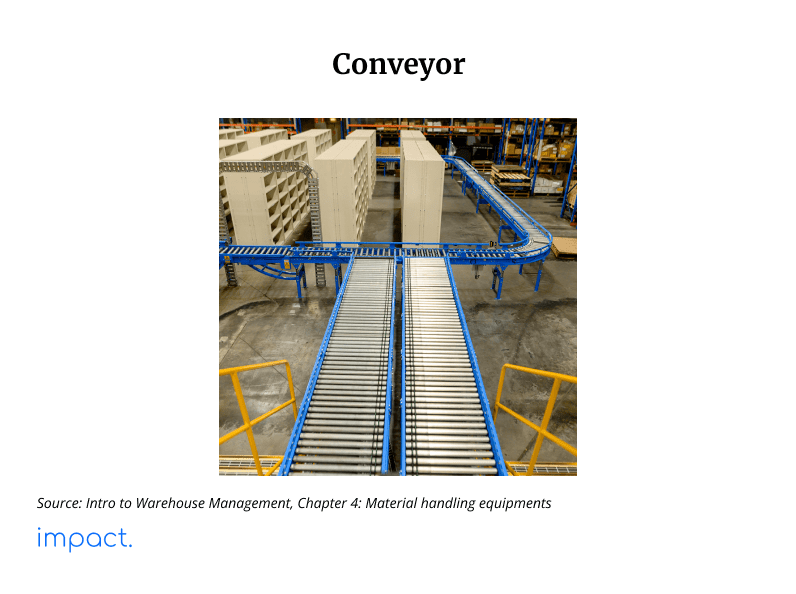
These are systems for moving materials from one location to another. They can be simple, such as roller conveyors, or complex, like conveyor belts.
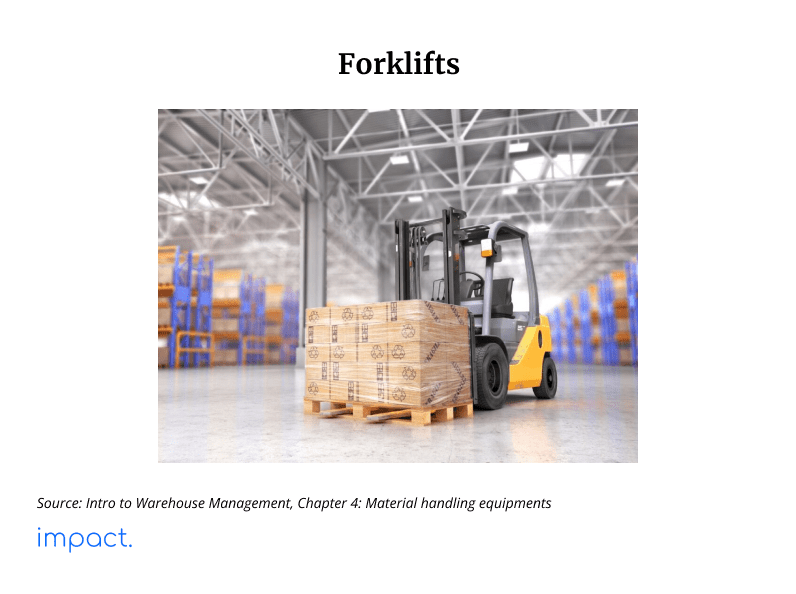
Forklifts are industrial trucks equipped with pronged devices (forks) that can be raised and lowered for lifting, moving, and stacking materials.
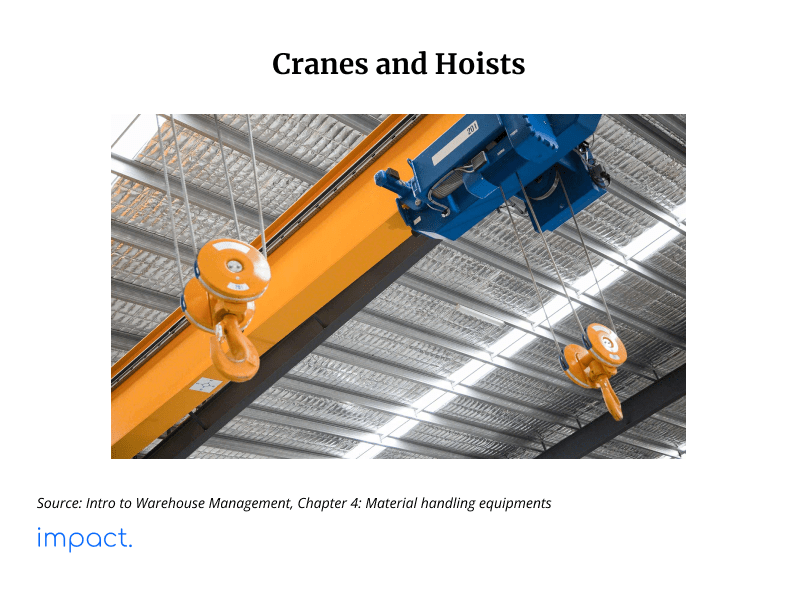
These are used for lifting and positioning heavy materials. Overhead cranes and hoists are common in manufacturing and construction.
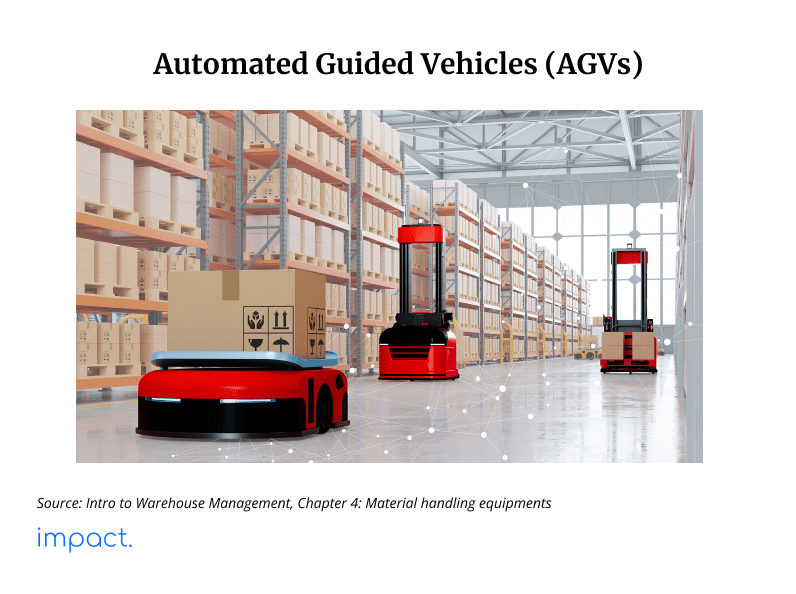
AGVs are computer-controlled, wheel-based load carriers that move materials within a facility, often following a predetermined path.
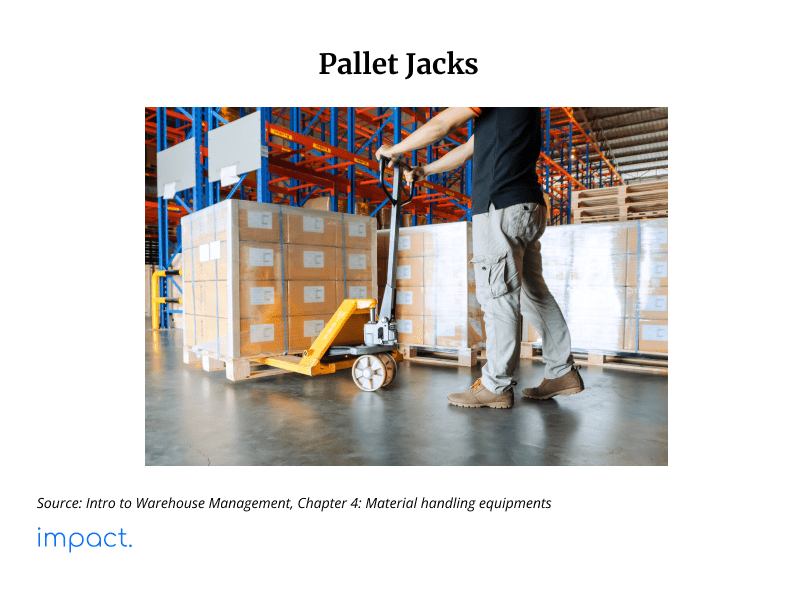
Also known as pallet trucks, stack pallets, or pallet lifters, pallet jacks are used to lift and move palletized materials within a warehouse.
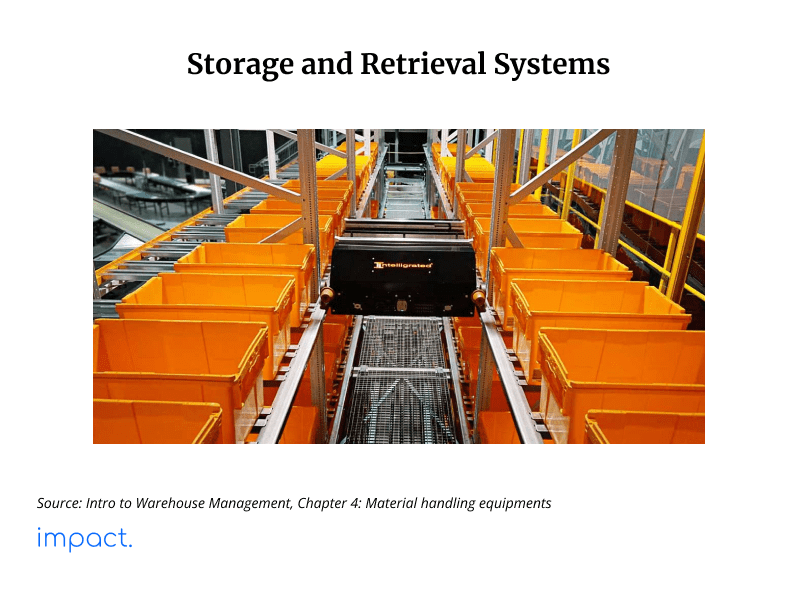
Automated systems that handle storing and retrieving goods from racks or shelves, such as automated storage and retrieval systems (AS/RS).
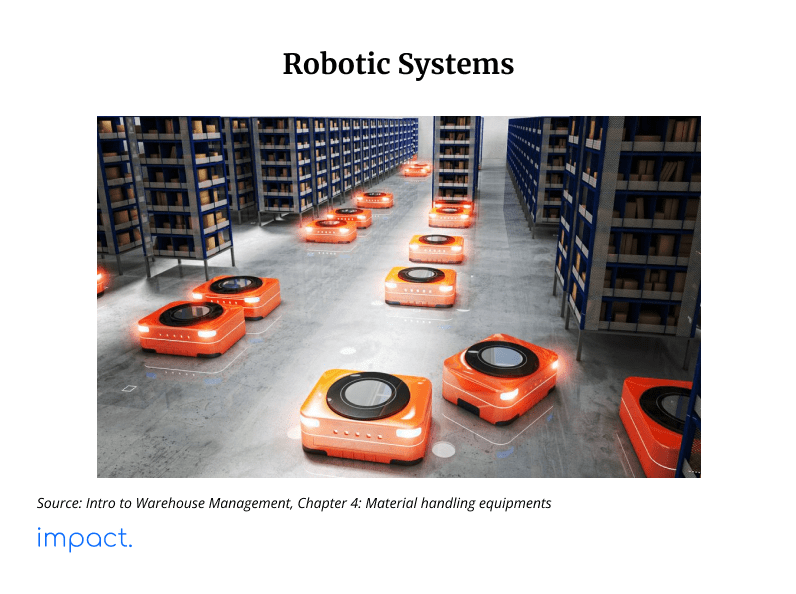
Robotics systems are industrial robots are increasingly used for material handling tasks, including picking, packing, and palletizing.
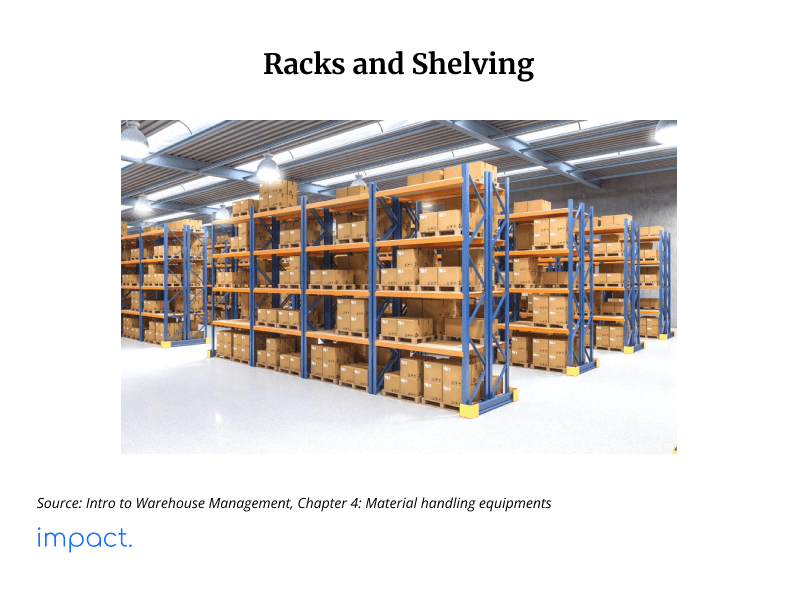
Storage equipment solutions like pallet racks, mezzanines, and shelving systems that help organize and store materials efficiently.
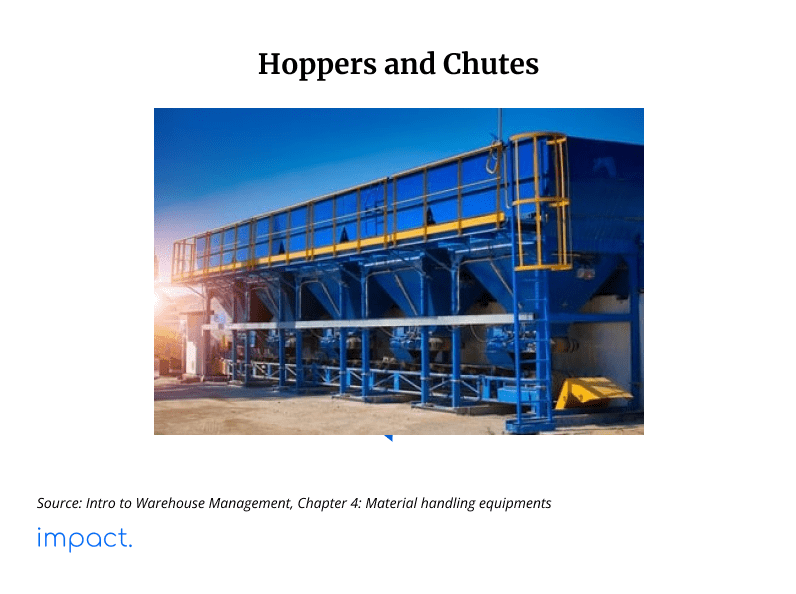
These are used to guide the flow of materials, such as grains, powders, or liquids, from one point to another.
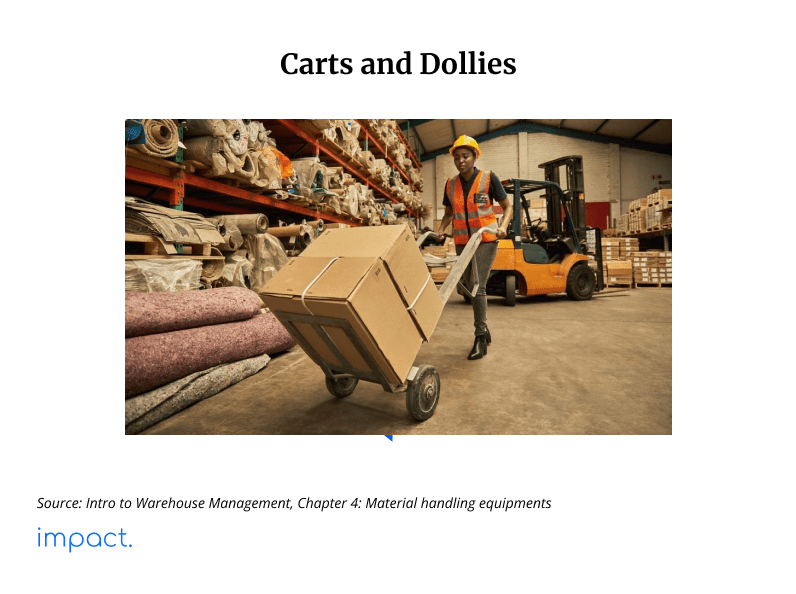
Simple wheeled devices used for manual handling material transport equipment within a facility.
Also read: The Ultimate Guide to Choose the Right Warehouse Layout and Design
Also read: Warehouse Management: Significance in Supply Chain, Challenges & Success Factors
Clearly define your material handling needs. Consider the types of materials you’ll be handling, the weight and size of loads, the layout of your facility, and any specific operational requirements.
Establish a budget for your MHE purchase. Factor in the initial purchase cost and ongoing maintenance, training, and operational expenses.
Choose the type of material handling equipment that best suits your needs. Common types include forklifts, conveyors, pallet jacks, automated guided vehicles (AGVs), and cranes. Select the equipment that aligns with your specific applications.
Evaluate whether new or used equipment suits your budget and operational requirements. Consider the condition of used equipment, its maintenance history, and any potential ongoing costs.
Research and choose reputable vendors or dealers. Look for companies with a history of providing quality equipment and reliable customer service. Check customer reviews and testimonials, if available.
Examine the features and capabilities of the equipment. Ensure that it meets or exceeds your operational requirements. Consider factors such as unit load capacity, lift height, maneuverability, and any special features needed for your applications.
Prioritize equipment with robust safety features. This includes features such as operator protection, visibility enhancements, emergency brakes, and alarms. Compliance with safety standards is crucial.
Inquire about the availability of training programs for operators. Ensure that the vendor provides adequate support, including documentation, manuals, and access to technical assistance if needed.
Check the warranty offered by the manufacturer and inquire about available maintenance plans. Understand the terms and conditions for warranty coverage and the availability of replacement parts.
If you have existing material handling systems or WMS, ensure the new equipment seamlessly integrates with your current infrastructure.
Consider your future business needs and whether the equipment can accommodate potential expansion or changes in your operations.
Familiarize yourself with local regulations and standards related to the use of material handling equipment. Ensure that the equipment you choose complies with these regulations.
Whenever possible, visit the vendor’s or manufacturer’s facility to inspect the equipment firsthand. This can provide valuable insights into the quality of the equipment and the company’s operations.
Material Handling Equipment (MHE) is crucial for efficient operations, but challenges like safety concerns and integration issues persist. Warehouse Management Systems (WMS) provide a concise solution.
WMS enhances safety through real-time monitoring and optimizes equipment usage by offering insights into inventory. By automating maintenance workflows and facilitating data-driven decisions, WMS effectively tackles MHE challenges, fostering a safer and more streamlined material handling environment.
Learn more: What Is ERP (Enterprise Resource Planning) – A Complete Guide
Automated Guided Vehicles (AGVs)
Automated Storage and Retrieval System (AS/RS)
Forklift or Lift Truck
Industrial robots
Preventive maintenance
Right-of-way rules
Truck attachments
Impact Insight Team
Impact Insights Team is a group of professionals comprising individuals with expertise and experience in various aspects of business. Together, we are committed to providing in-depth insights and valuable understanding on a variety of business-related topics & industry trends to help companies achieve their goals.
See how our software provides better value.
Speak with our consultant to explore how we can improve your accounting, processes, and people.
